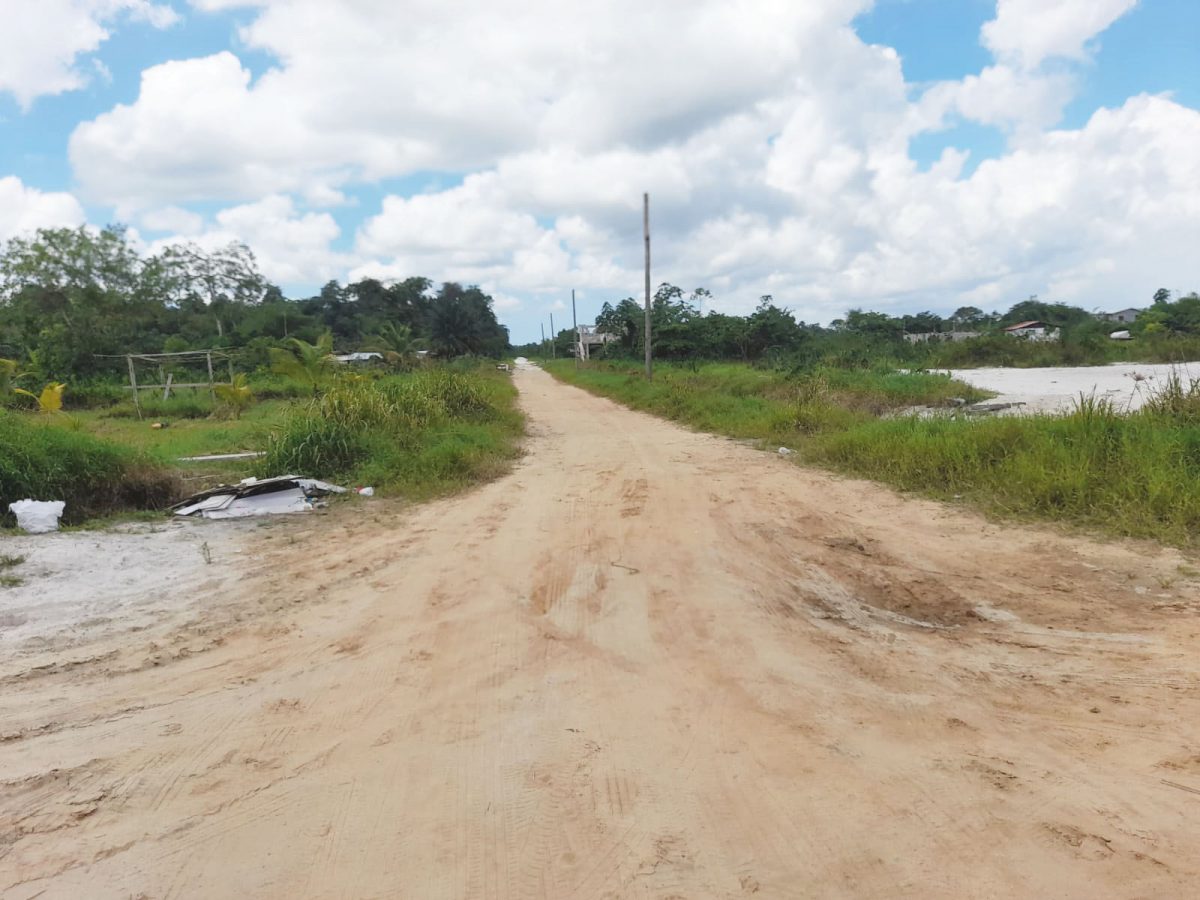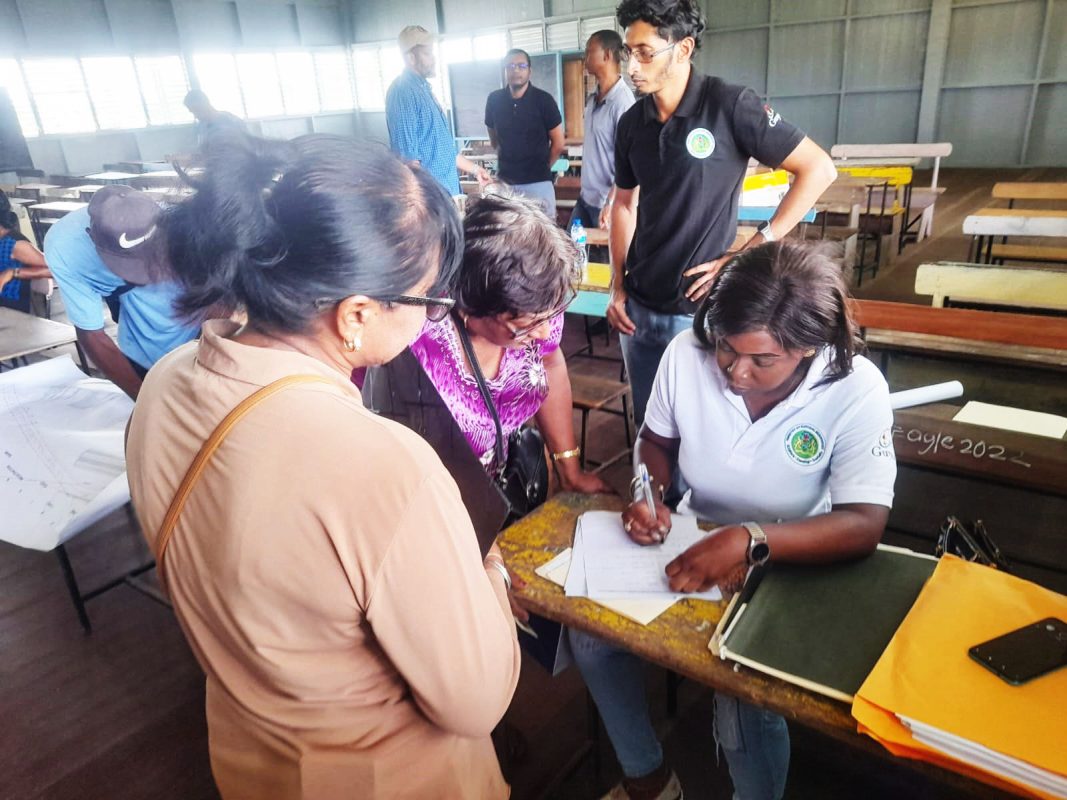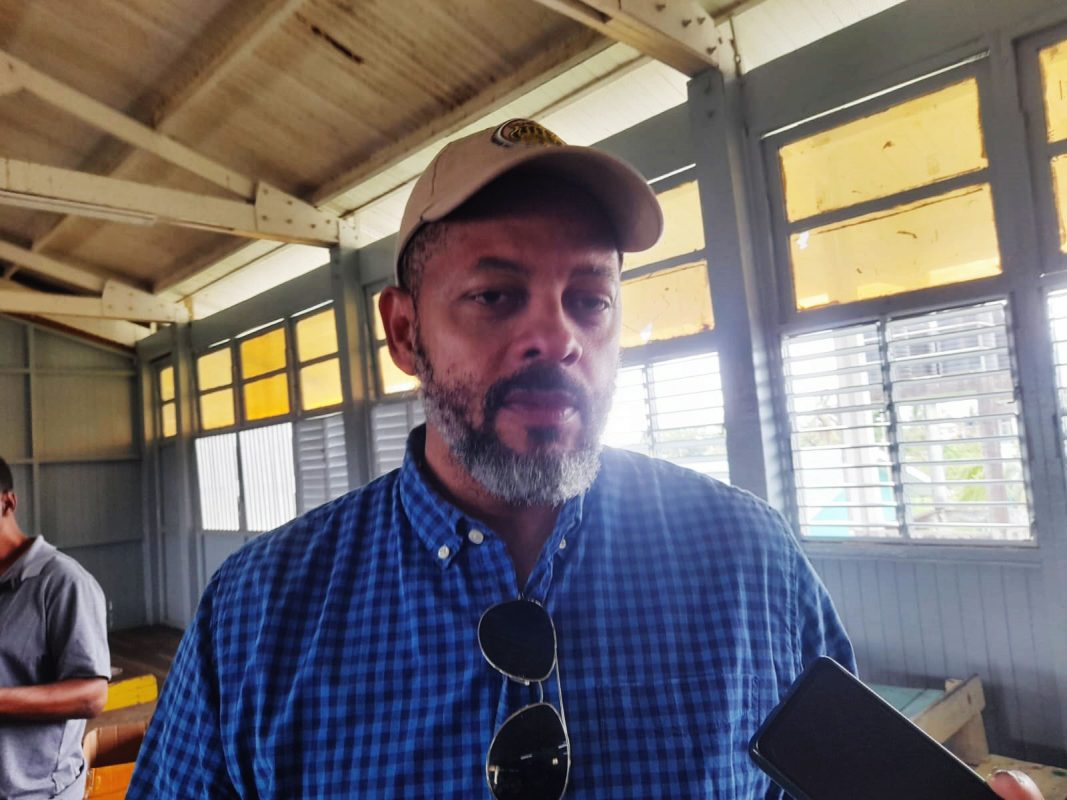By Joseph Allen
A public meeting was yesterday held for those persons whose lands will be acquired for public purposes to facilitate the laying of transmission lines for the Wales gas-to-energy project.
At the meeting, some 29 persons were called in to discuss the development plan, legal procedures, and most importantly, compensation for the lands they occupied. They were contacted beforehand and constituted the majority of individuals present at the meeting yesterday.
Those also present at the meeting included, Minister of Natural Resources, Vickram Bharrat; Project Lead, Winston Brassington; Legal Advisor, attorney-at-law Ronald Burch-Smith; as well as personnel from the Ministry of Natural Resources.
The meeting which was held at the Friendship Secondary School was attended by residents of Friendship and Garden of Eden who stand to be affected by transmission lines which will run through some 70 acres of land which they occupied.
“We had a public meeting. We invited the 29 persons whose lands are going to be acquired by Acquisition for Public Purposes for the 230 kV [kilovolt] transmission line that will come from Wales across the river head. First Garden of Eden, then go down to the conservancy then terminate at Goedverwagting,” Brassington explained.
He noted that this process was started about two months ago when the Lands and Survey team mapped out the area where the transmission line will be laid and did a valuation of the lands.
With the project well underway, the government has indicated that some $400 million will be allocated as compensation for residents whose properties lie in the path of the pipes and the plant.
“Similar to what we did with the pipeline route, we are offering people twice as much as the land value. Fortunately, there is no occupation of the land. Most are essentially empty or farming is being done and most of it is at the back of the conservancy where the transmission route will go,” the Project Lead pointed out.
According to Brassington, the government is willing pay up to double the average price of $1.5 million per acre. He added that folks while accepting of the offer, were more worried about procedures.
“I think, more people are concerned with the process and the next step to see if their names are correct because you know some of the people are selling land, some of the people are on land without transport and some are being transported to land registration.”
He assured that no one will be evicted from any lands but only a portion of land will be taken away and that so far what lands are needed for the project is already being catered for.
Stabroek News was present at the meeting and spoke to several people who are affected.
One resident, Angela King, said that her issue is not about acquisition, but more so how her family will be compensated after spending millions on the land for several generations for roads and drains, etc.
“I have a land valuation here, I don’t know what it says but you know from dealing with lands recently, I know how expensive it is. It has cost me hundreds of thousands of dollars just to probate the land to keep it going since my dad was a school teacher, the amount of money made him die poor because all the money had to fight folks on the land and no one helped him. We had to pay taxes and all these things so. I’m hoping to be well compensated for this.”
King said that not much information had been given about the plan and how much land will be affected, but at this meeting, that information was given to them in the document. Armed with this information, she added, she and her lawyer will study what is being offered and make a decision.
Patricia Corlete, another resident, said that she was sitting on some 23 acres of land and for years they have been developing the areas into housing schemes, with plots being sold for some $4 million each. She noted that in this case, about six house lots will be affected and therefore $1.8 million might not be enough.
“No, because the amount is $1.8 million. So if six house lots are affected, we will normally sell these house lots for $4 million, because we are doing work on it the prices would go up.” Corlete said when asked if she was pleased with the offer.
Legal matters
Government acquiring land for public purposes, according to Burch-Smith, is not illegal but requires that compensation be made.
“The constitution of Guyana provides that no person should be deprived of their land or property without compensation. The Acquisition of Lands for Public Purposes Act provides a framework in which compensation can be made and it deemed the acquisition of land subject only to the payment of compensation.”
His work, he informed, will be handling the process until the signing of the agreement.
“It requires examining their title document, comparing it with our records, negotiating an agreement within the parameters that the government has determined, and how compensation is to be paid. Occasionally they are issues of title and how the other lands may be titled and we listen to that and try to find solutions that are appropriate and agreeable to both sides.”
The attorney noted that he sees no issues that can arise from the process but if they do pop up, there are mechanisms in place for them to be dealt with in with the parameters of the law.
“The typical issues I anticipate have two categories; one is persons may not have a title for the land that they occupy. We will try to work it out, and help them to get letters of administration or whatever is the appropriate mechanism to resolve that. In some cases, I expect the actual owner from overseas to get a power attorney to complete the negotiations and sign an agreement of compensation. The other category of problems is where persons might be using the land and they are not being able to do a certain thing anymore; so, I have been farming here, you are paying me for it and I don’t want to sell it any more. So, that usually presents a bit of difficulty or some other land that is being acquired is affecting you. But, in this case, I don’t think that there will be a lot of that.”
Burch-Smith noted that with all that’s happening, if things go as planned the process can be wrapped up in weeks and he does not expect too many challenges.
History
The Gas-to-Energy project is purposed to establish infrastructure so that natural gas can be transported from the offshore Stabroek Block Liza oilfield to an integrated gas processing facility at Wales, on the West Bank of Demerara. The project will deliver natural gas liquids (NGL) and dry gas to the Government of Guyana.
A subsea pipeline is expected to be installed on the seafloor to transport natural gas from the Liza field to an onshore pipeline on the west coast of the Demerara River.
Onshore, a pipeline will deliver the gas to an integrated facility at Wales. At this facility, a NGL processing plant will treat the gas for commercialisation, and a 300-megawatt (MW) power plant will use the dry gas to generate electricity for domestic use. It is expected that cost of electricity will be reduced for consumers by some 50 per cent. Currently the Guyana Power and Light (GPL) supplies power at a rate of 15 US cents per kilowatt hour.
This project is a collaboration between the Government of Guyana and oil giant ExxonMobil to the tune of US$1.7 billion.
When completed, Guyana is expected to have a natural gas-fired power plant and NGL plant capable of producing at least 4,000 barrels per day, including the fractionation (separating out) of liquefied petroleum gas (LPG).
ExxonMobil is expected to deliver the completed pipeline to the power plant by the fourth quarter of 2024 and achieve commissioning and testing of the power plant by the end of 2024. Guyana stands to save some US$500 million annually after paying ExxonMobil US$55 million each year for the pipeline. This US$55 million payment will come from cost oil to ExxonMobil for the 12-inch pipeline and is a “fixed price” for the next 20 years.
The NGL plant will be owned by the Government of Guyana prior to the conclusion of the construction and an international firm will be competitively selected to operate the project to international standards and best practices.
With development well on the way, the mapping of other power lines was included, as well as a Provision of Engineering, Procurement and Construction (EPC) Services contract, which will see the installation of transmission lines and substations for the integrated NGL Plant for the 300 MW Power Plant at Wales.
Kalpataru Projects International Limited (KPIL) of India was awarded the contract for this project which is expected to be completed next year and it is expected to cost some US$159 million.












